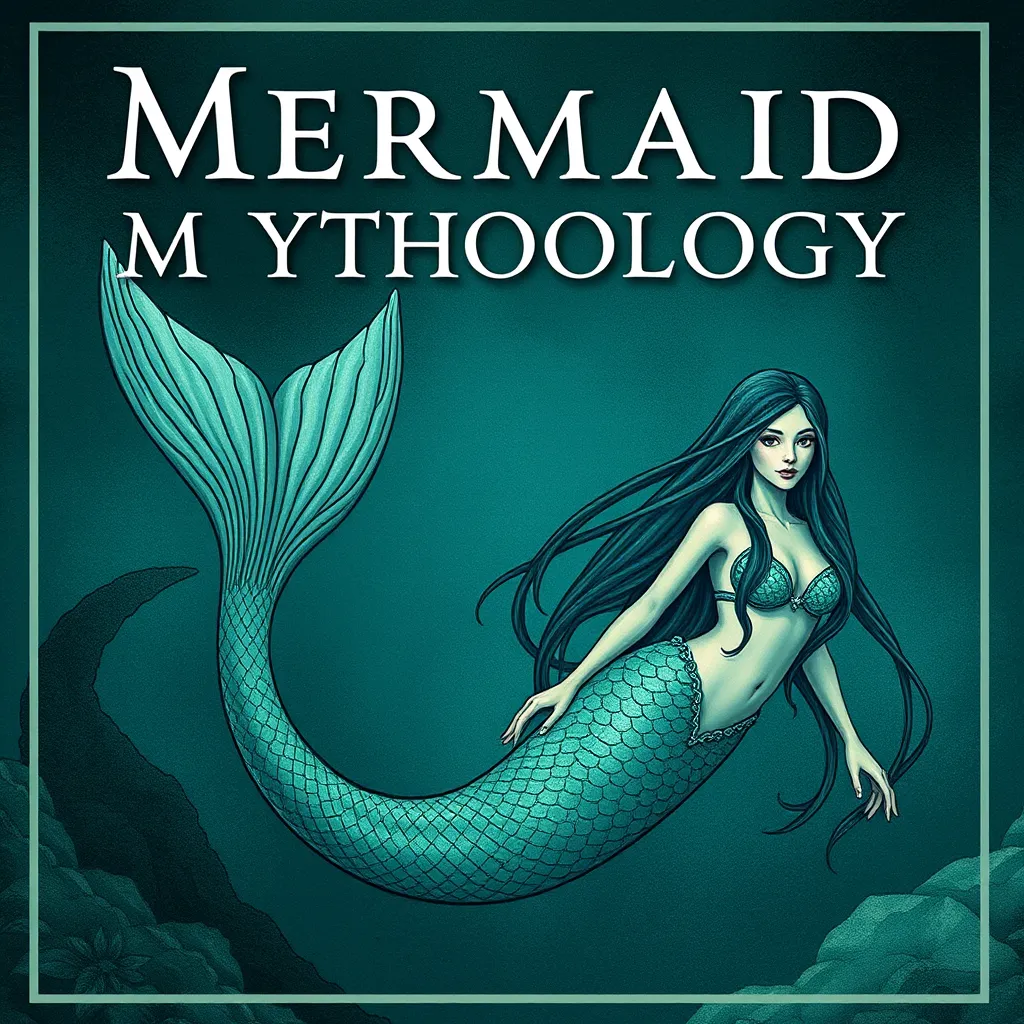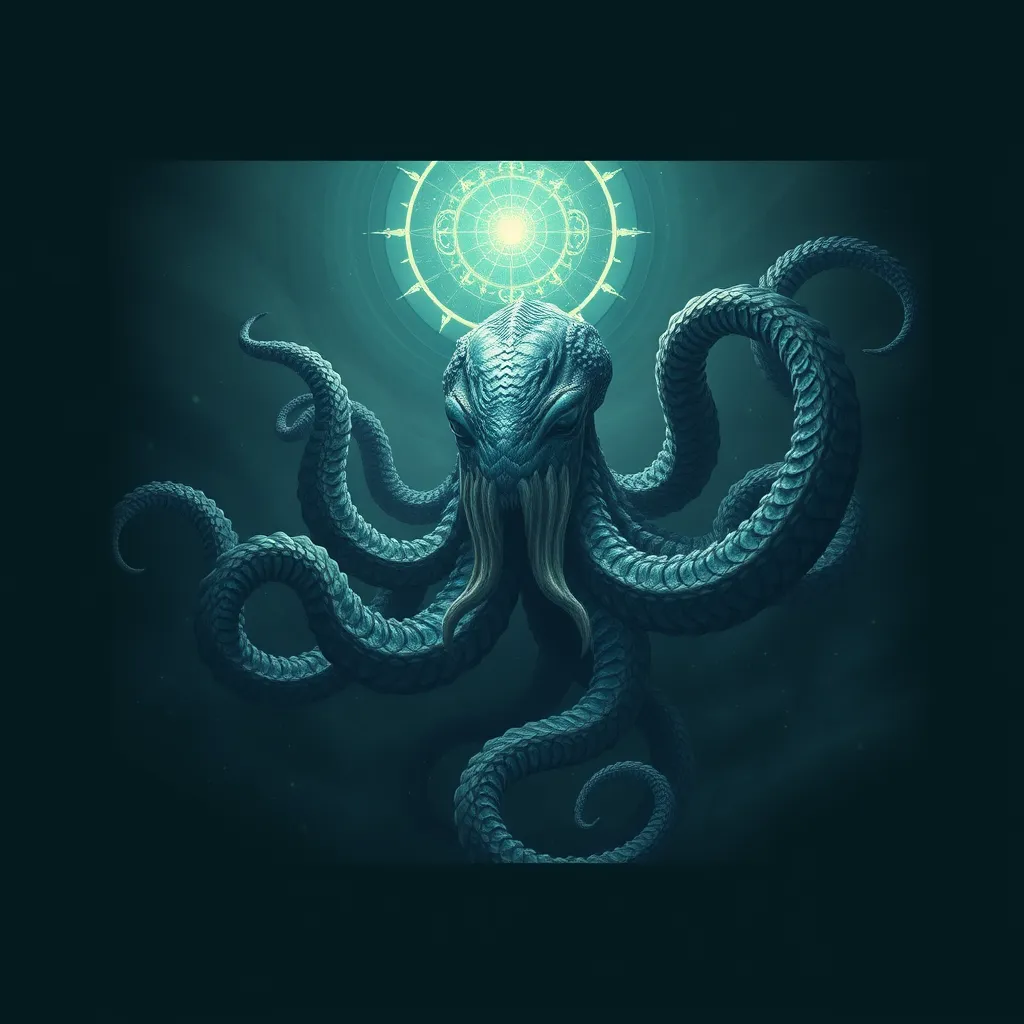Mermaid Mythology: A Comprehensive Guide to the Myth and its Meanings
I. Introduction to Mermaid Mythology
Mermaids, often depicted as beautiful women with fish tails, are mythical creatures that have captured the imagination of cultures around the world. These enchanting beings embody the allure of the sea, representing both beauty and danger. This guide aims to explore the depths of mermaid mythology, tracing their origins, cultural significance, and the meanings they hold in various contexts.
Historically, mermaids have been woven into the fabric of folklore, literature, and art, serving as symbols of femininity, freedom, and the mysteries of the unconscious. This guide will provide a comprehensive overview of mermaid mythology, delving into their origins, cultural representations, and lasting impact on modern society.
II. Origins of Mermaid Myths
A. Ancient Civilizations and Their Beliefs
The roots of mermaid myths can be traced back to ancient civilizations such as the Babylonians, Greeks, and Egyptians. Each culture had its own interpretation of aquatic beings that resembled mermaids:
- The Babylonian goddess Atargatis, depicted as a fish-tailed woman, was revered as a deity of fertility.
- In Greek mythology, the Sirens, often confused with mermaids, lured sailors to their doom with enchanting songs.
- Egyptian mythology featured the goddess Hathor, who was associated with the Nile and had fish-like attributes.
B. Early Texts and Art Depictions
Mermaids have been documented in various texts and artworks throughout history:
- The “Epic of Gilgamesh” includes references to fish-women.
- In medieval bestiaries, mermaids were often depicted alongside other mythical creatures.
- Renaissance art frequently showcased mermaids, blending them into religious and mythological narratives.
C. Evolution of the Mermaid Archetype
Over time, the archetype of the mermaid evolved, reflecting societal changes and cultural exchanges. From benevolent sea nymphs to dangerous temptresses, the portrayal of mermaids has varied widely, each interpretation revealing deeper societal beliefs and fears.
III. Mermaids in Different Cultures
A. European Folklore and Legends
In European folklore, mermaids are often depicted as tragic figures, torn between their aquatic homes and the human world. Popular legends include:
- The mermaid of Copenhagen, whose statue symbolizes the city’s maritime heritage.
- The tale of the Little Mermaid, a Hans Christian Andersen story that explores themes of sacrifice and longing.
B. Asian Interpretations of Mermaid-like Beings
In Asian cultures, mermaid-like beings appear in various forms:
- In Japanese mythology, the ningyo (human-fish hybrid) is said to bring misfortune to those who catch it.
- Chinese legends feature the dragon king’s daughter, who often takes on a mermaid-like appearance.
C. African and Indigenous Perspectives
In Africa and among indigenous cultures, water spirits and mermaid-like beings hold significant spiritual meanings:
- The Mami Wata of West African folklore, a water spirit often depicted as a mermaid, symbolizes beauty and wealth.
- Indigenous tribes in North America have stories of water women who embody the spirit of rivers and lakes.
IV. Symbolism and Meanings of Mermaids
A. Femininity and Gender Roles
Mermaids are often seen as symbols of femininity. Their dual nature—part human, part fish—embodies the complexity of gender roles and societal expectations of women.
B. Freedom and the Duality of Nature
Mermaids represent freedom and the allure of the unknown, often symbolizing the struggle between the desire for independence and societal constraints.
C. The Mermaids’ Connection to the Unconscious
The mystical nature of mermaids connects them to the unconscious mind, representing hidden desires, fears, and the depths of human emotion.
V. Mermaids in Literature and Media
A. Classic Literature Featuring Mermaids
Mermaids have been prominent figures in classic literature, such as:
- The Little Mermaid by Hans Christian Andersen
- The Fisherman and His Wife by the Brothers Grimm
B. Modern Adaptations in Film and Television
In contemporary media, mermaids have been reimagined in various forms:
- Disney’s The Little Mermaid popularized a more whimsical and romantic view of mermaids.
- Television series like “H2O: Just Add Water” and “Siren” explore modern interpretations of mermaid mythology.
C. The Impact of Disney and Pop Culture
Disney’s portrayal of mermaids has significantly influenced modern perceptions, creating a blend of fantasy and reality that resonates with audiences worldwide.
VI. Mermaids as Modern Icons
A. The Revival of Mermaid Culture in Popularity
In recent years, there has been a resurgence of mermaid culture, marked by:
- Mermaid-themed festivals and events.
- Mermaid-inspired merchandise and fashion trends.
B. Mermaids in Fashion and Art
Mermaids have become popular motifs in fashion and art, inspiring:
- Haute couture collections featuring mermaid silhouettes.
- Art installations and exhibitions celebrating mermaid mythology.
C. Social Media Influence and Mermaid Aesthetics
Platforms like Instagram and TikTok have popularized “mermaid aesthetics,” characterized by:
- Mermaid-inspired makeup and fashion.
- Underwater photography and content creation.
VII. The Psychological and Emotional Aspects of Mermaid Myths
A. Mermaids as Symbols of Desire and Longing
Mermaids often embody deep desires and longings, representing the quest for fulfillment and the allure of the unattainable.
B. The Role of Mermaids in Human Psychology
In psychological terms, mermaids may symbolize aspects of the self that are hidden or repressed, encouraging individuals to explore their emotions and desires.
C. Therapeutic Interpretations of Mermaid Stories
Mermaid stories can serve therapeutic purposes, helping individuals process feelings of isolation, longing, and identity through storytelling and mythological exploration.
VIII. Conclusion: The Enduring Legacy of Mermaids
A. Summary of Key Insights
Mermaids have transcended time and culture, embodying various meanings and symbolisms that reflect human experiences and emotions.
B. The Future of Mermaid Mythology
As society continues to evolve, so too will the interpretations of mermaids, adapting to contemporary values and beliefs.
C. Invitation for Further Exploration and Interpretation
Mermaid mythology invites us to explore our own depths, encouraging a continued fascination with these enchanting beings. Whether through literature, art, or personal reflection, the legacy of mermaids will undoubtedly persist in our collective imagination.



